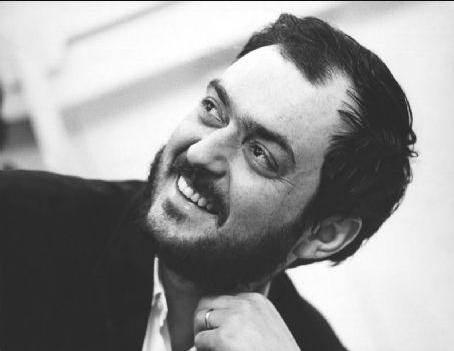Stanley Kubrick Death
Stanley passed away on March 7, 1999 at the age of 70 in Childwickbury Manor, Hertfordshire, England. Stanley's cause of death was heart failure.
When did Stanley Kubrick die?
March 7, 1999How did Stanley Kubrick die? What was the cause of death?
Heart failureHow old was Stanley Kubrick when died?
70Where did Stanley Kubrick die? What was the location of death?
Childwickbury Manor, Hertfordshire, England
Stanley Kubrick Birthday and Date of Death
Stanley Kubrick was born on July 26, 1928 and died on March 7, 1999. Stanley was 70 years old at the time of death.
Birthday: July 26, 1928
Date of Death: March 7, 1999
Age at Death: 70
Stanley Kubrick - Biography
Stanley Kubrick was born in Manhattan, New York City, to Sadie Gertrude (Perveler) and Jacob Leonard Kubrick, a physician. His family were Jewish immigrants (from Austria, Romania, and Russia). Stanley was considered intelligent, despite poor grades at school. Hoping that a change of scenery would produce better academic performance, Kubrick's father sent him in 1940 to Pasadena, California, to stay with his uncle, Martin Perveler. Returning to the Bronx in 1941 for his last year of grammar school, there seemed to be little change in his attitude or his results. Hoping to find something to interest his son, Jack introduced Stanley to chess, with the desired result. Kubrick took to the game passionately, and quickly became a skilled player. Chess would become an important device for Kubrick in later years, often as a tool for dealing with recalcitrant actors, but also as an artistic motif in his films.
Kubrick married his high-school sweetheart Toba Metz, a keen caricaturist, on May 29, 1948, when he was nineteen years of age. They had attended Taft High School together and had lived in the same apartment block on Shakespeare Avenue. The couple lived together in Greenwich Village and divorced three years later in 1951. He met his second wife, the Austrian-born dancer and theatrical designer Ruth Sobotka, in 1952. They lived together in New York's East Village beginning in 1952, got married in January 1955 and moved to Hollywood in July 1955, where she played a brief part as a ballet dancer in Kubrick's film, Killer's Kiss (1955). The following year she was art director for his film, The Killing (1956). They divorced in 1957. Kubrick lived with dancer and actress Valda Setterfield after the marriage broke down.
During the production of Paths of Glory in Munich in early 1957, Kubrick met and romanced the German actress Christiane Harlan, who played a small though memorable role in the film. Kubrick married Harlan in 1958, and the couple remained together 40 years, until his death in 1999. Besides his stepdaughter, they had two daughters together: Anya Renata (April 6, 1959 – July 7, 2009) and Vivian Vanessa (born August 5, 1960). In 1959 they settled into a home at 316 South Camden Drive in Beverly Hills with Harlan's daughter, Katherina, aged six. They also lived in New York, during which time Christiane studied art at the Art Students League of New York, later becoming an independent artist. The couple moved to the United Kingdom in 1961 to make Lolita, and Kubrick hired Peter Sellers to star in his next film, Dr. Strangelove, Sellers was unable to leave the UK, so Kubrick made Britain his permanent home thereafter. The move was quite convenient to Kubrick, since he shunned the Hollywood system and its publicity machine, and he and Christiane had become alarmed with the increase in violence in New York.
Kubrick's Childwickbury Manor in Hertfordshire, England
In 1965 the Kubricks bought Abbots Mead on Barnet Lane, just South-West of the Elstree/Borehamwood studio complex in England. Kubrick worked almost exclusively from this home for 14 years where, with some exceptions, he researched, invented special effects techniques, designed ultra-low light lenses for specially modified cameras, pre-produced, edited, post-produced, advertised, distributed and carefully managed all aspects of four of his films. In 1978, Kubrick moved into Childwickbury Manor in Hertfordshire, a mainly 18th century stately home, which was once owned by a wealthy racehorse owner, about 30 mi (50 km) north of London and a 10-minute drive from his previous home at Abbotts Mead. His new home became a workplace for Kubrick and his wife, "a perfect family factory" as Christiane called it, and Kubrick converted the stables into extra production rooms besides ones within the home that he used for editing and storage.
A workaholic, Kubrick rarely took a vacation or left England during the forty years before he died. Biographer Vincent LoBrutto notes that Kubrick's confined way of living and desire for privacy has led to spurious stories about his reclusiveness, similar to those of Greta Garbo, Howard Hughes, and J. D. Salinger. Michael Herr, Kubrick's co-screenwriter on Full Metal Jacket, who knew him well, considers his "reclusiveness" to be myth: "e was in fact a complete failure as a recluse, unless you believe that a recluse is simply someone who seldom leaves his house. Stanley saw a lot of people ... he was one of the most gregarious men I ever knew, and it didn't change anything that most of this conviviality went on over the phone." Lo Brutto states that one of the reasons he acquired a reputation as a recluse was because he insisted in remaining near his home, but the reason for this was because for Kubrick there were only three places on the planet he could make high quality films with the necessary technical expertise and equipment: Los Angeles, New York or around London. He disliked living in Los Angeles, and had thought London a superior film production center to New York.
As a person, Kubrick was described by Norman Lloyd as "a very dark, sort of a glowering type who was very serious". Marisa Berenson, who starred in Barry Lyndon fondly recalled: "There was great tenderness in him and he was passionate about his work. What was striking was his enormous intelligence, but he also had a great sense of humor. He was a very shy person and self-protective, but he was filled with the thing that drove him twenty-four hours of the day." Kubrick was particularly fond of machines and technical equipment, to the point that his wife Christiane once stated that "Stanley would be happy with eight tape recorders and one pair of pants". Although Kubrick had obtained a pilot's license in August 1947, some have claimed that he later developed a fear of flying, stemming from an incident in the early 1950s when a colleague had been killed in a plane crash. Kubrick had been sent the charred remains of his camera and notebooks which, according to Duncan, traumatized him for life. Kubrick also had a strong mistrust of doctors and medicine, especially those he did not know, and on one occasion he had a dentist from the Bronx flown to London to treat him.
On March 7, 1999, six days after screening a final cut of Eyes Wide Shut for his family and the stars, Kubrick died in his sleep at the age of 70, after suffering a massive heart attack. His funeral was held five days later at his home estate at Childwickbury Manor, with only close friends and family in attendance, totaling approximately 100 people. The media were kept a mile away outside the entrance gate. Alexander Walker, who attended the funeral, describes it as a "family farewell, ... almost like an English picnic", with cellists, clarinetists and singers providing song and music from many of his favorite classical compositions. Kaddish, the Jewish prayer of mourning, was recited. A few of his obituaries mentioned his Jewish background. Among those who gave eulogies were Terry Semel, Jan Harlan, Steven Spielberg, Nicole Kidman and Tom Cruise. He was buried next to his favorite tree on the estate. In her book dedicated to Kubrick, his wife Christiane included one of his favorite quotations of Oscar Wilde: "The tragedy of old age is not that one is old, but that one is young."








